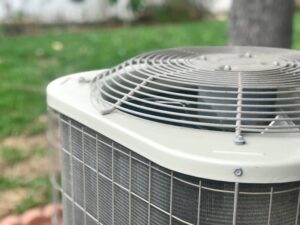If you’re buying an older (pre-1950s) home and it doesn’t have air conditioning, there are a few ways you can successfully bring it into the 21st century, but each option may require some careful decision making and even troubleshooting on your part.
OTHER POTENTIAL CHALLENGES INCLUDE:
- Older homes generally lack the space needed to install the duct work that traditional A/C systems require.
- The current electrical system may not be able to handle the load that a modern system requires
- You may have to lower ceilings or surrender closet space to accommodate the new system
- Original woodwork and plaster can be damaged
You may be told that unless you’re prepared to tear into walls to install ductwork, your only options for summertime comfort are window air conditioners or the through-the-wall units seen in many motels. Fortunately, there are alternative central air conditioning systems for older properties that do not require you to temporarily turn your home into a construction zone.
Ductless Mini-Split Systems
Ductless split systems consist of two primary components- the compressor and the condensing unit (also known as the ‘outdoor unit’) and the evaporator coil and air handling unit, which create the ‘indoor unit’. The outdoor components are typically installed under a window on the exterior building wall while the indoor unit can be mounted on the wall or installed in the ceiling. The two sections are connected by a conduit containing the electrical and refrigerant lines.
Mini split systems are smaller and are generally used to cool one or two rooms. While not as efficient as some systems, they are a great choice for attics and bedrooms whose occupants prefer different comfort levels.
High Velocity Systems
High velocity HVAC systems are ideal for homes that can’t accommodate big ducts. They use flexible and pre-insulated smaller ducts that can run through walls without having to cut large holes in your plaster or woodwork, and the blower and coil unit sit in a single, compact box that can fit in narrow spaces.
These systems are a great choice if your older home is not structurally designed to accommodate the heating and cooling system components of a traditional HVAC system.
VRF Systems
VRF systems are one of the most popular cooling options for vintage homes. Like traditional central air conditioning systems, they have indoor air handlers and outdoor condenser units, but no ductwork is required. Instead, several smaller interior fan coil units are connected throughout the home by refrigerant lines. This allows you to create zones throughout the home that can be individually controlled, and system operation is both quiet and energy-efficient because it runs only at the capacity needed to keep you and your family comfortable.
As an added bonus, VRF systems can be controlled remotely, so you can use your tablet or smartphone to adjust temperature settings for each area.
If you need assistance in choosing the right air conditioning option for your older home, your local HVAC specialist can recommend the right system for the property’s structure and design. They can also confirm that your new system is set up to support your family’s anticipated usage, so that you can enjoy your vintage property while maintaining modern comfort levels.






